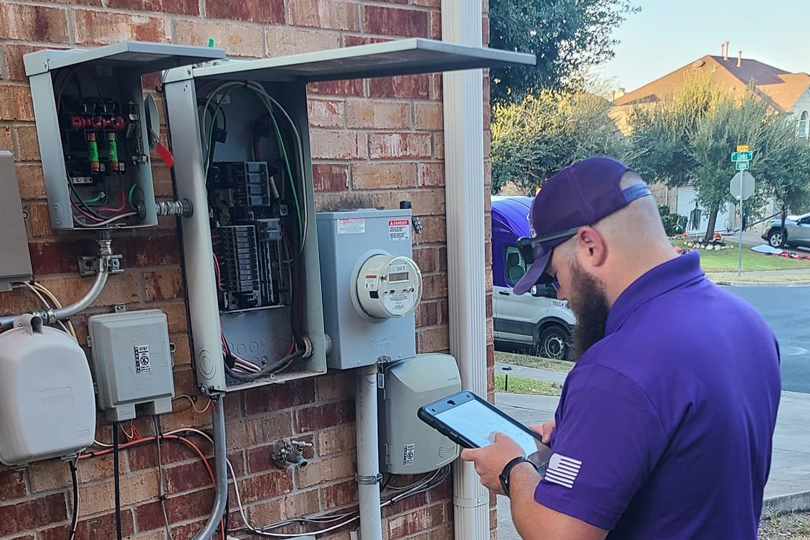Spring is a season of renewal—and that applies to your home, too. As warmer weather arrives, it’s the perfect time to tackle maintenance tasks that keep your property in top shape. But not all tasks are created equal. Some can be handled with a simple DIY approach, others require routine attention, and a few should always be left to the professionals. Here’s a checklist to guide you through your spring home maintenance.
1. DIY Tasks Homeowners Can Handle
These tasks are simple, safe, and don’t require special tools or skills. Tackle these over a weekend to refresh your home and prevent larger issues down the road.
- Clean Gutters and Downspouts: Leaves, twigs, and debris can clog your gutters, leading to water damage, roof leaks, and foundation issues. Use gloves, a sturdy ladder, and a garden hose to clear and flush your gutters. Don’t forget to check the downspouts to ensure water flows away from your home.
- Inspect and Replace Weatherstripping: Weatherstripping around doors and windows wears out over time, allowing drafts to enter and cooled or heated air to escape. Replacing worn weatherstripping is a simple, inexpensive way to improve comfort and energy efficiency.
- Test Smoke and Carbon Monoxide Detectors: Safety first! Press the test button on all detectors to confirm they work properly. Replace batteries if needed and clean around the sensors to prevent dust buildup from interfering with functionality.
- Clean Ceiling Fans and HVAC Vents: Dust buildup on fan blades and HVAC vents reduces air circulation and indoor air quality. Wipe down fan blades and vacuum vents. While you’re at it, switch your ceiling fans to rotate counterclockwise for spring and summer to push cool air downward.
- Power Wash Outdoor Surfaces: Winter weather leaves behind grime and mold on driveways, sidewalks, decks, and patios. Use a power washer to restore these surfaces. If you notice cracks or uneven areas, it might be time to bring in a professional handyman.
Tip: Make DIY maintenance more manageable by spreading tasks over several weekends instead of trying to tackle everything at once.
2. Routine Maintenance Tasks to Stay on Top Of
Regular upkeep is essential for preserving your home’s value and preventing bigger issues down the road. Here are some tasks that should be part of your seasonal maintenance plan:
- Check Your Roof for Damage: Winter storms can cause shingles to crack, curl, or go missing. Inspect your roof from the ground with binoculars or climb up carefully to check for damage. Look for water stains on ceilings, which may indicate leaks. If anything looks suspicious, call a professional for an assessment.
- Inspect Decks and Patios: Outdoor living spaces take a beating from changing temperatures and moisture. Check for loose boards, rusted nails, and cracks that could create safety hazards. Sand and seal wood decks to protect against rot and insect damage.
- Clean and Inspect Outdoor Fixtures: Landscape lighting, outdoor outlets, and decorative fixtures accumulate dirt and moisture over the winter. Clean the fixtures, check for exposed wiring, and make sure bulbs and connections are working.
- Examine Foundation Vents and Crawlspaces: Small animals often seek shelter in crawlspaces during colder months. Inspect foundation vents for damage, clean out debris, and seal any gaps.
- Flush Your Water Heater: Sediment buildup reduces a water heater’s efficiency. Drain and flush the tank to improve performance and extend its lifespan.
3. Tasks Best Left to the Professionals
Certain tasks require specialized tools, knowledge, and training to be done safely and correctly. Here are some spring maintenance projects that are better handled by professionals:
- Electrical System Inspection and Tune-Up: Electrical systems are the backbone of your home’s functionality—and safety. It’s recommended to have a professional inspection every 2–3 years.
- HVAC System Maintenance: Your heating and cooling systems need routine attention to maintain efficiency and avoid breakdowns.
- Plumbing Maintenance: Plumbing issues often start small and escalate quickly. Have a plumber inspect for leaks, corrosion, and clogs.
- Deck Repairs and Sealing: Outdoor structures require periodic maintenance to stay safe and beautiful.
Tip: If you notice flickering lights, tripping breakers, or buzzing outlets during your DIY tasks, stop immediately and contact a licensed electrician.
4. Spring Prep for Outdoor Living
- Clean and Inspect the Grill: Check gas lines, clean grates, and ensure burners are free from debris.
- Inspect Outdoor Furniture: Clean cushions and check frames for rust or damage.
- Test Outdoor Lighting: Make sure all exterior lights, including pathway and patio lights, are functioning correctly.
- Prepare Garden Beds: Remove dead plants, add fresh mulch, and inspect irrigation systems for leaks.
5. Prepare for Spring Storms
- Trim Trees Near Power Lines: Overgrown branches can damage power lines during storms. Hire a professional tree service to handle any close to electrical lines.
- Inspect Sump Pumps: Make sure basement or crawlspace pumps are working to prevent flooding.
- Backup Power Solutions: Consider installing a generator or portable inlet setup.
- Surge Protection: Lightning strikes and power surges can damage appliances and electronics. Whole-home surge protection provides a first line of defense.
Did you know? Power surges don’t just come from lightning. Grid fluctuations and large appliance cycling can also cause damage.
Conclusion
A well-maintained home is a safe, comfortable, and efficient home. By following this checklist, you can handle basic maintenance tasks while knowing when to bring in professional help. Contact us today to schedule your spring maintenance tune-up or get expert advice on your next home project.

